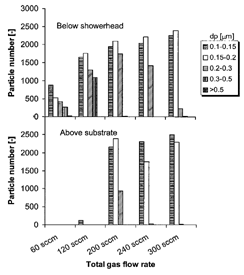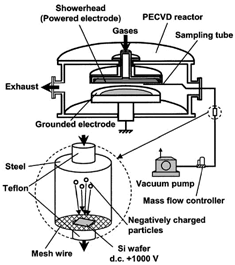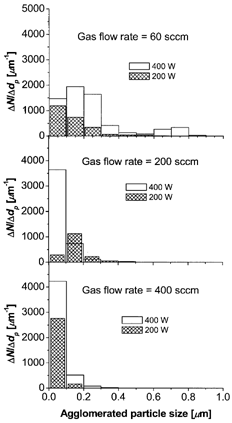Figures & data
FIG. 2 A typical spatial distribution of the scattered light intensity in the space between the electrodes.
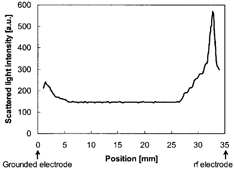
FIG. 3 Dependence of the particle cloud structure in the trap below the showerhead (powered electrode) on total gas flow rate for an rf power of 200 W and room temperature: (a) 60 sccm, (b) 200 sccm, and (c) 300 sccm.
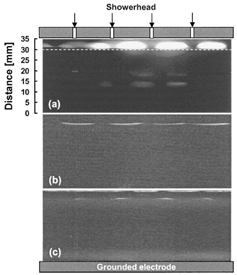
FIG. 4 Dependence of particle formation on gas flow rate. The data are at room temperature and rf power 200 W.
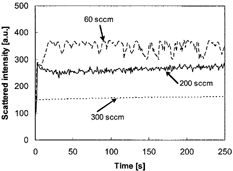
FIG. 5 SEM images of particles drawn from the trap at a gas flow rate of 60 sccm and an rf power of 200 W at (a) room temperature, and (b) a substrate temperature of 300°C. The particles form an agglomerate consisting of several primary particles. The particle boundary is clear at room temperature but is not clear at a substrate temperature of 300°C.

FIG. 6 The size distribution of primary particles drawn from the trap near the powered electrode at an rf power of 200 W as a function of gas flow rate at room temperature. The particle size distribution of the agglomerates deduced from SEM images using Feret method is shown for the case of gas flow rate 60 sccm.
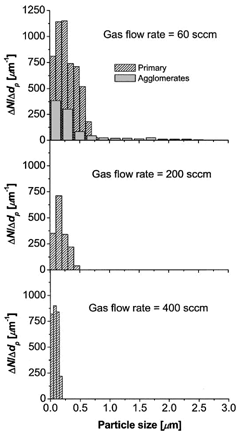
FIG. 7 Number of particles in the trap near the powered and the grounded electrodes counted by the in-line particle counter by drawing the particles for 5 s as a function of gas flow rate.
